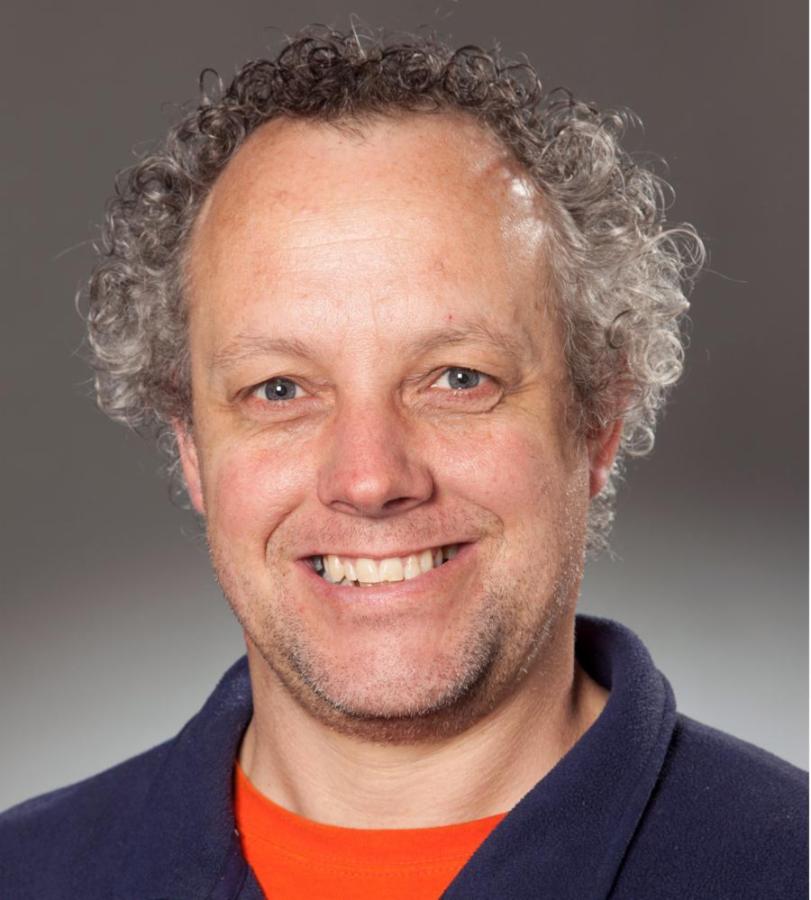Sedimentology equipment
The Sedimentology Laboratory is where most sedimentological work is undertaken, from simple descriptions through to high-end particle-size determinations. As well as traditional sediment analysis equipment of sieves and pipettes, we have a range of more advanced equipment:
Particle Size Facility
Micromeritics Saturn Digisizer II high-resolution laser particle size analyser
This high-resolution laser particle size analyser employs a static laser light scattering technique coupled with advanced digital detection technology to deliver exceptionally high levels of resolution, accuracy, repeatability, and reproducibility of samples. A state-of-the-art CCD detector containing over three million detector elements enables the completely automated Saturn DigiSizer II to capture a high resolution, digital representation of the pattern produced as a result of laser light scattered from a sample. The resulting information is then processed using data reduction based on Mie theory. The instrument produces fast and detailed results.
Other equipment
- Hydrofluoric Acid compliant fume hood.
- Numerous 200mm sieves for general use with associated sieve shaker, as well as 300mm sieves for cosmogenic preparation with a RO-TAP rx-30-10 sieve shaker.
- Barnstead Thermolyne 1400 furnace.
- Arbor hand press.
- There is also house compressed air and deionised water as well as large sinks with sediment traps.
Sedimentology Laboratory
- 2x SCOPE active core refrigerators, for cool storage of samples such as peat core and water.
- SONOREX Bandolin Ultrasonic Bath.
- Omni International Sonic Ruptor homogeniser.
- 3x Contherm thermotec 2000 ovens.
- Stereo microscopes (Meiji, Zeiss).
- Heraeus Labofuge 400 Centrifuge.
- Eppendorf Centrifuge 5430.
- Ika KS 260 Control flat shaker.
- Sartorius ED2245, AND HR-200, and AND GX-10K laboratory balances.
- 2x Eco Air fume hoods.
- IKA C-Mag HS4, Velp Scientifica HSC, and Yellowline Yellow Mag HP10 magnetic stirrers and hotplates.
- SoilTest rifflers.
- Glassware, columns and equipment for various tests and experiments including density separation (using LST Heavy Liquid) and analog particle size determination.
Microtrak Digital Image Analyser
Capable of measuring the range of 50um to 30mm, this system takes multiple images of each sediment grain as it falls through a calibrated field of view. Multiple images of each grain allow the measurement of A, B and C axes of each grain, as well as the calculation over 20 other parameters (eg angularity, concavity, sphericity, feret diameter etc).
Analysis of each sample is completed within minutes and can be directly correlated with sieves of user nominated sizes for comparable distributions with historic data. This system represents a major step forward in sediment analysis, with the supplied software enabling quick comparison between any of the measured variables. This gives the researcher the ability to investigate subtleties within the sample not previously available.
Agico MFK1 Kappabridge
Used for the measurement of anisotropy of magnetic susceptibility (AMS). Small samples are collected carefully from deposits in the field. The Kappabridge is able to measure minute changes in magnetic fields, which are often associated with grain orientation. Therefore, using the AMS method can tell us about the orientation of sediment grains in-situ which, in turn, can tell us about the depositional processes involved with a given deposit.
Armfield Flume
Our re-circulating flume can be used to investigate a variety of sediment transport and depositional processes. With adjustable angle, physical blocks, adjustable weir and adjustable flow rate, many experiments can be devised and adjusted according to specific requirements. Our time-lapse cameras are useful in capturing slower moving processes, while our basic high speed camera can pick up the more rapid changes. We are hopeful of adding in laser particle tracking in the near future.
Rapid Sediment Analyser (RSA)
Based on the settling principle, this is the only method which provides reliable information on how sediment will behave in a fluid, due to the contributions of its size, shape and density. This is achieved by releasing a sediment sample at the top of a 2m tall settling tube, and timing the duration until sediment settles on a plate (connected to a balance) at the bottom of the column. The whole system is computer controlled for precise timing and ease of data collection.
Rollability
This system comprises of a smooth cylinder inclined at a 2.5 degree angle and rotated by a motor. Sediment is introduced at the upper slope and the decent is timed to a balance at the end of the system. More rounded grains, indicating more mature sediment, passes through the system more quickly than angular, less mature sediment. When comparing samples within a study area, this can be indicative of sediment sinks and sources.



